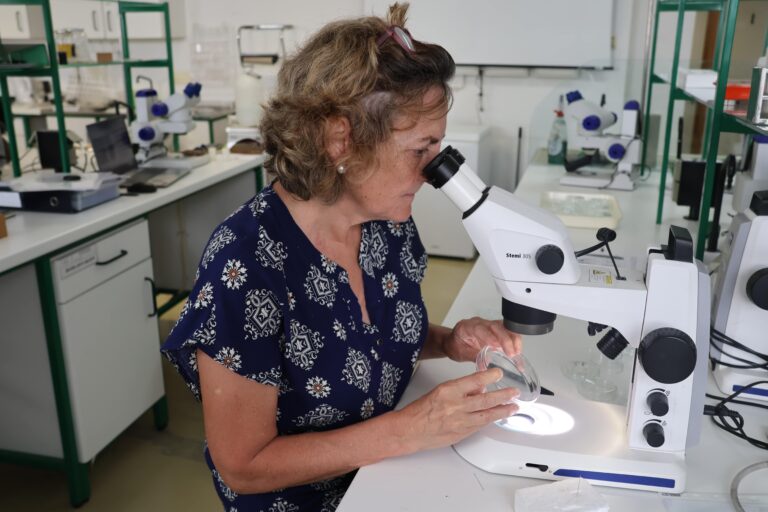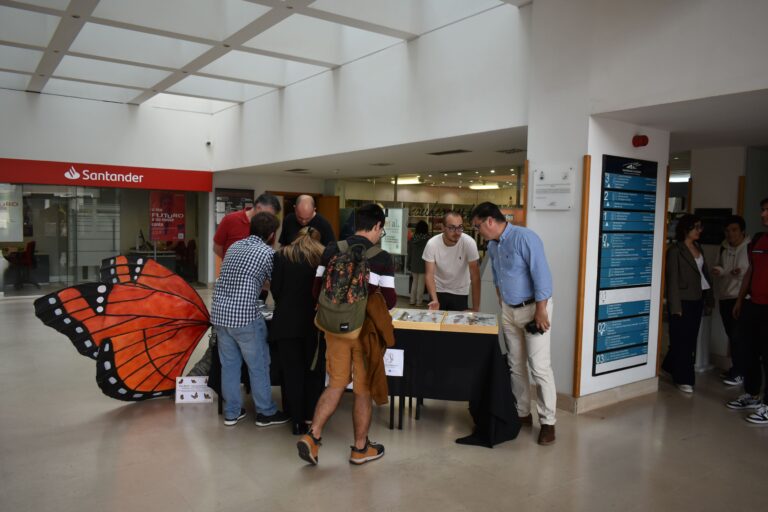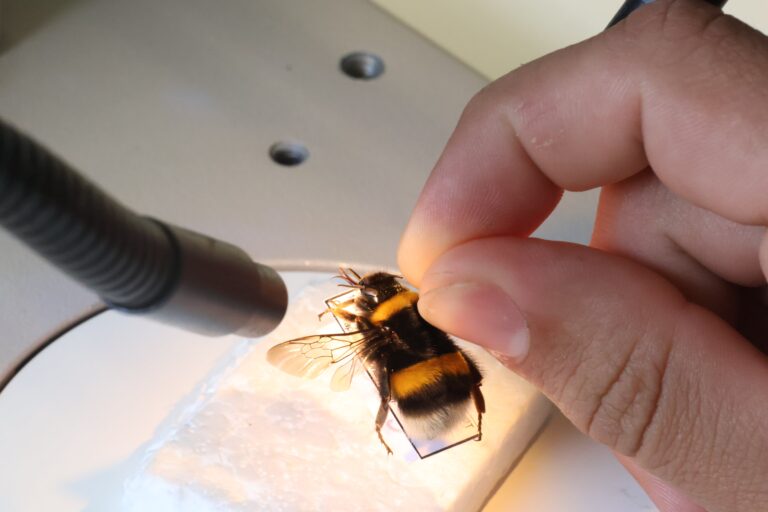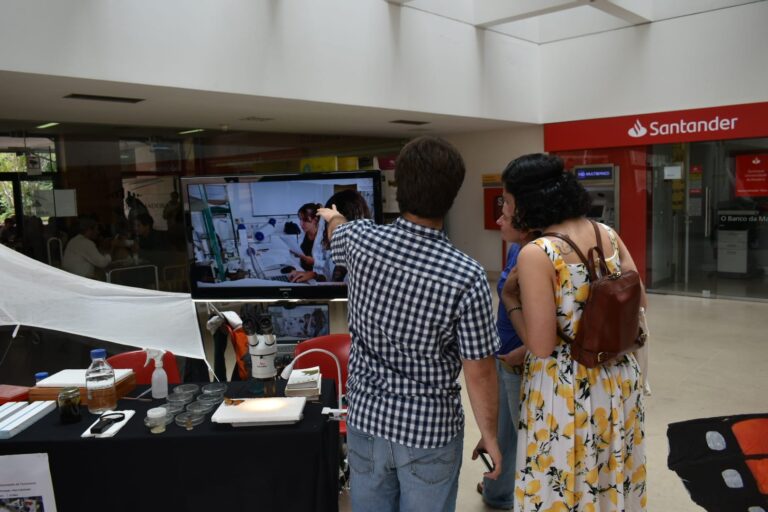Taxonomy Recognition Day
On May 23rd, 2025, we celebrated the International Day for the Recognition of Taxonomy with a public event held at the university’s main entrance from 10:00 a.m. to 5:00 p.m. The event aimed to raise awareness of taxonomy’s vital role in understanding life on Earth.
Before discussing the event, it is vital to briefly explain what taxonomy is. Taxonomy is the science that names, describes, and classifies all forms of life—plants, animals, and microorganisms alike (Guerra-García et al. 2008). Historically speaking, the modern taxonomy was first developed by Swedish botanist Carolus Linnaeus, who lived during the 18th Century, and his system of classification (Systema Naturae) is still used today (Manktelow 2010). Today, taxonomic information plays a crucial role in addressing major conservation challenges, many of which extend across international borders (McNeely 2002). These include the spread of invasive species, emerging diseases, declines in natural populations, the conservation of migratory birds, and the impacts of international wildlife trade (McNeely 2002).

This event was initially promoted by the tettrisEU program—Transforming European Taxonomy through Training, Research, and Innovation—a European Union initiative to revitalize taxonomy across Europe. tettrisEU honors those dedicated to documenting and protecting biodiversity, especially at a time when taxonomy faces significant challenges: lack of funding, fewer trained taxonomists and the low recruitment of young scientists (Guerra-García et al. 2008). Moreover, taxonomic journals often have low impact factors, and the discipline struggles to gain visibility within the scientific community and the public (Guerra-García et al. 2008). tettrisEU aims to reverse these trends through training, innovation, and awareness-raising.
The event, held in the city of Funchal, featured six core activities designed to actively engage students, teachers, and visitors alike. Running almost simultaneously, these activities created a vibrant and dynamic atmosphere throughout the venue.
The first activity, entitled “The Taxonomists’ Investigative Process”, provided a detailed, step-by-step insight into the methodologies used by taxonomists. Participants were guided through every stage—from fieldwork and sample collection to specimen curation, identification, and classification. Throughout the session, attendees explored essential tools such as stereo microscope, field guides, and dichotomous keys, while examining a wide range of specimens. These included endemic, native, and exotic fauna sourced from Madeira Island, Porto Santo Island, mainland Portugal, Europe, Asia, and America. Additionally, the activity showcased UMACI’s exhibition collection.

The second activity involved an in-person survey aimed at assessing the audience’s knowledge and perceptions of taxonomy and biodiversity. Covering topics such as taxonomy basics, entomology, biodiversity conservation, biological fieldwork, and Madeira’s endemic species, the questionnaire encouraged participants to reflect and engage in a meaningful discussion. A qualitative analysis evaluated the accuracy of responses and the reasoning behind them. Among the ten respondents, the majority demonstrated a good understanding of the topics, although only few were previously familiar with the team’s work, making this the first direct engagement with us for almost everyone. It is important to note that not all event participants chose to complete the survey for various personal reasons.
The main objective of the third activity entitled “Identifying the Intruder” was to strengthen participants’ observation skills and deepen their understanding of animal’s taxonomy. Participants were challenged to determine which of three animals’ specimens—originating from various European countries and other continents such as America and Asia—did not belong to the same taxonomic group of the other two also presented, based on their morphological and classificatory characteristics. By using specimens preserved in resin, participants were able to closely examine structural features without compromising specimen preservation. This activity reinforced key concepts in morphology, systematics, and evolutionary adaptation, while fostering greater interest in global biodiversity through an interactive experience. On average, participants enjoyed the activity and successfully identified the correct intruders.
The fourth activity promoted the ongoing project entitled “ARCADE”. The goal of this project is to establish a solid foundation of knowledge in pollinator taxonomy — a topic of critical importance for Madeira Island and mainland Portugal. The activity included information on the diversity of these groups in Madeira Archipelago, including the number of recorded species, notable ecological traits, and the broader importance of pollinator taxonomy for society. The specimens associated to this same project were also observed under a stereo microscope, and participants were taught how to distinguish between major insect pollinator orders using key morphological features. This project is led by the University of Coimbra through the FLOWer Lab — the Laboratory of Plant Ecology and Evolution, Pollination Services, and Agroecology — in collaboration with Polli.Net, the Portuguese collaborative network for the evaluation, conservation, and valorization of pollination and pollinators https://www.pollinet.pt/arcade.

Furthermore, the fifth activity featured a presentation summarizing the team’s research, fieldwork, and outreach efforts over the past five years. Finally, the sixth activity promoted the Insetos da Madeira citizen science project, launched in 2021 to raise public awareness of insect diversity and encourage species documentation via the iNaturalist platform. Informative flyers about this project were distributed to guide participants on how to contribute to scientific research through their own observations.
In general, our event was aimed at the university community, including students, professors, and staff. We welcomed many students from a broad range of academic backgrounds—such as Educational Sciences, Informatics, Arts and Design, Biology, Biochemistry, and Culture and Literature—both national and international. Beyond the academic audience, the event also attracted members of the local community. The participants were diverse in age, ranging from children and young adults to senior citizens. Overall, the event attracted around 100 participants. The feedback of the public was positive, with many highlighting how much they had learned and appreciating the opportunity for direct contact with biodiversity.
In joining this Europe-wide celebration, the Insect Collection of the University of Madeira contributed to a collective effort by universities, museums, and research institutions to bring public attention to taxonomy’s enduring importance. By participating in this initiative, the University of Madeira not only acknowledged the historical and scientific value of taxonomy but also reaffirmed its commitment to advancing biological research and promoting environmental awareness through public engagement.

Guerra-García J.M., Espinosa F. & García-Gómez J.C. (2008). Trends in taxonomy today: an overview about the main topics in taxonomy. Zoologica baetica, 19, 15-49.
Manktelow M. (2010). History of taxonomy. Lecture from Dept. of Systematic Biology, Uppsala University, 29.
McNeely J.A. (2002). The role of taxonomy in conserving biodiversity. Journal for Nature Conservation, 10(3), 145-153.
